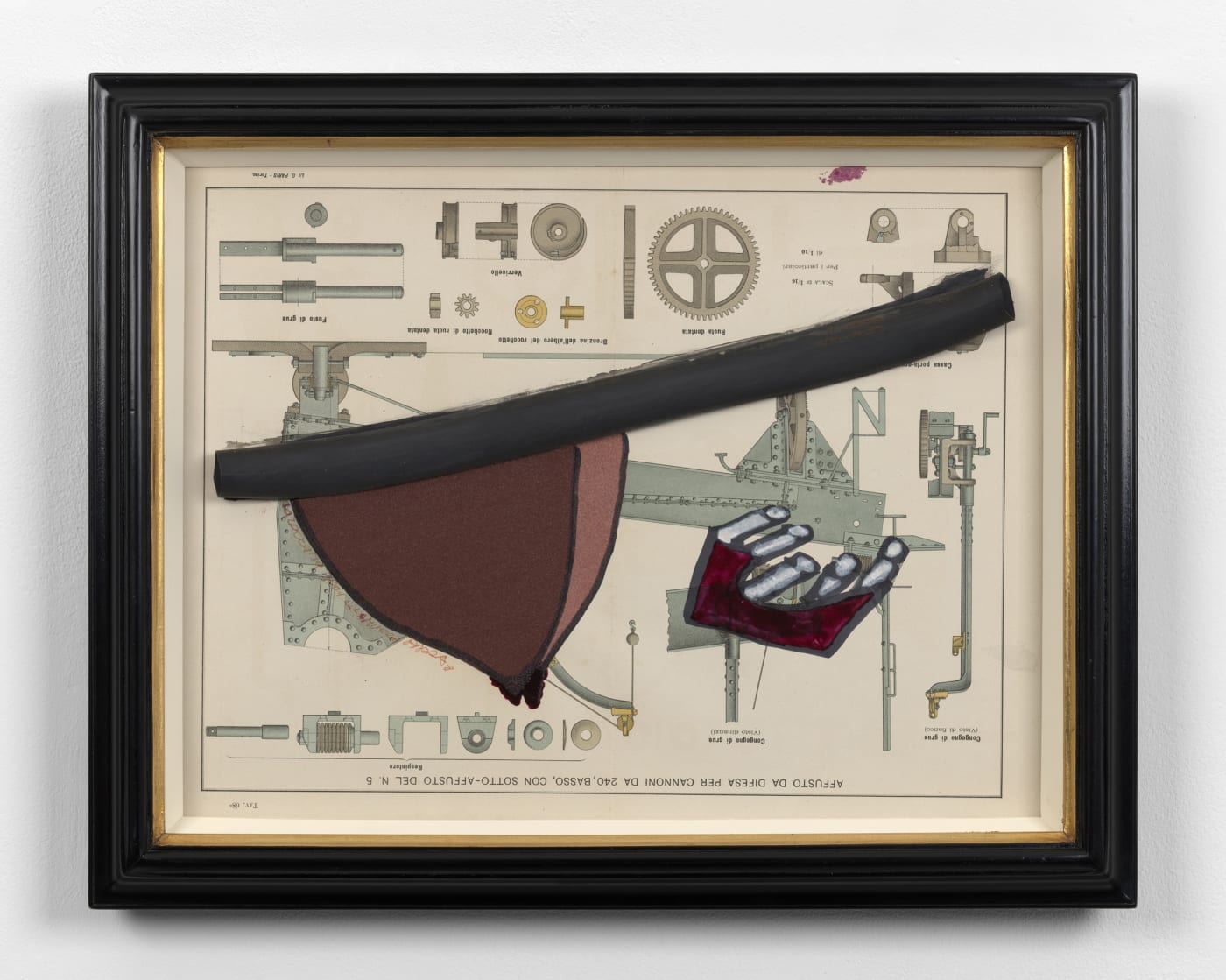Carol Rama was a self-taught Italian artist whose paintings dealt with themes of sexuality and bodily forms, with a frank emphasis on mental illness. Often depicting bizarre or visceral scenes, including snakes being birthed from a woman’s genitals, the artist’s work came out of a deep desire to release inner anguish. “I paint out of passion and anger and violence and sadness and a certain fetishism and out of joy and melancholy together and out of anger especially,” she once explained.
Born Olga Carolina Rama, she was orphaned at 15, after her mother was put into an insane asylum and her father committed suicide. By the age of 21, the artist was already producing provocative works and spending time at salons held by the Symbolist painter Felice Casorati. Rama’s first show opened in 1945, amidst the height of Mussolini’s fascist regime, it was promptly shut down by the police. During the 1950s, she explored abstraction and created assemblages from syringes, car tires, and mechanical pieces. Mostly unknown outside of Italy, the curator Lea Vergine brought Rama out of obscurity by including her work in the 1978 exhibition ‘The Other Half of the Avant-Garde: 1910–1940’.
Over the following decades, the artist’s work grew traction and in 2003 she was awarded the Golden Lion for Lifetime Achievement at the 50th Venice Biennale. Rama died at the age of 97 on September 25, 2015 in Turin, Italy. The artist was posthumously made the subject of a large survey exhibition ‘Carol Rama: Antibodies’, which opened at the New Museum in 2017. Today, her works are held in the collections of The Museum of Modern Art in New York, the Stedelijk Museum in Amsterdam, and the Galleria Civica d’Arte Moderna e Contemporanea in Turin, among others.

